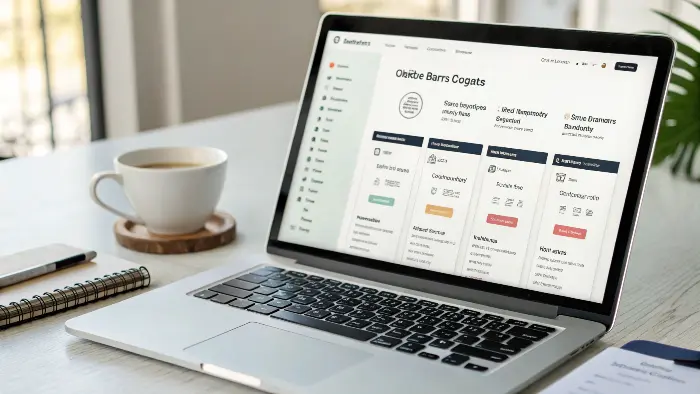You have a vision for a unique online sex toy store, but the path from idea to reality seems incredibly complex and overwhelming. This feeling of being stuck before you even start is frustrating, making you doubt if you can navigate the maze of sourcing, branding, and legal hurdles. I’ve walked this path myself, and I’m here to give you a clear, step-by-step roadmap.
To start selling sex toys online, begin by defining a specific niche and building a strong brand identity around it. Next, choose a sourcing model—dropshipping, wholesale, or direct manufacturing. Then, build your store on a compliant e-commerce platform with a high-risk payment processor. Finally, focus your marketing on content and SEO, and make customer safety and privacy your absolute top priority.

That’s the 30,000-foot view. It sounds straightforward, but success is found in the details of each step. Simply having a store isn’t enough; you need the right products, the right message, and the right strategy to connect with customers in a crowded market. Let’s break down the most critical parts of this journey to build a solid foundation for a thriving business.
How do I find my niche and build a brand that stands out?
You look at the online market and see a sea of competitors, from massive retailers to countless small shops. It feels impossible to make a splash when the ocean is already so full. How can your small brand possibly compete? The secret is to stop trying to be everything to everyone and instead become the perfect solution for a specific group of people.
To find your niche, identify an underserved audience, such as long-distance couples, people with disabilities, or those focused on eco-conscious wellness. Then, build your brand identity—your name, logo, colors, and voice—to speak directly to that group’s unique values and desires. A strong, focused brand doesn’t compete with the giants; it creates its own loyal community.

Defining your niche and brand is the single most important thing you will do. It’s the foundation upon which everything else is built—your product selection, your marketing messages, and your customer relationships. It’s how you turn a generic product into a meaningful purchase. Let’s explore how to do this effectively.
Identifying Your Ideal Customer
Before you sell anything, you must know who you’re selling to. Don’t just think in broad terms like "women aged 25-40." Go deeper. What are their values? What problems are they trying to solve? What does pleasure and wellness mean to them? Creating a detailed customer profile, or "avatar," will guide every decision you make.
| Potential Niche | Customer Values | Potential Products |
|---|---|---|
| The Eco-Conscious User | Sustainability, natural materials, ethical production. | Body-safe glass or recycled silicone toys, organic lubricants. |
| The Tech-Forward User | Innovation, app-connectivity, advanced features. | App-controlled vibrators, VR-integrated devices. |
| The Minimalist | Simple design, high quality, discreetness. | Sleek, single-function toys with elegant packaging. |
| The Education-Seeker | Learning, body positivity, guided experiences. | Anatomical models, curated kits with educational guides. |
Crafting Your Brand Story
People don’t just buy products; they buy into stories and missions. Your brand story is your "why." Why did you decide to start this business? What change do you want to see in the world of sexual wellness? Maybe you were frustrated by the lack of quality products, or you wanted to create a more inclusive and welcoming space. This story is what creates an emotional connection. It should be woven into your "About Us" page, your social media content, and even your product descriptions. It’s what makes you memorable and builds a loyal following that a faceless mega-retailer can never replicate.
Designing Your Visual and Verbal Identity
Once you know your niche and your story, you can build your identity. This has two parts. First is the visual: your logo, color palette, and photography style. A luxury brand might use deep jewel tones and elegant fonts, while a fun, youthful brand might use bright colors and playful graphics. Second is the verbal: your tone of voice. Are you clinical and educational? Warm and reassuring? Witty and bold? This voice must be consistent everywhere, from your website copy to your customer service emails. It’s how your brand speaks, and it should sound like a trusted friend to your ideal customer.
What’s the best way to source products for my store?
You need products to sell, but the world of sourcing is a confusing alphabet soup of acronyms like OEM, ODM, and MOQ. You’re worried about choosing the wrong path, getting stuck with low-quality items that damage your new brand, or sinking all your capital into inventory that doesn’t sell. Let’s clarify the options so you can choose the right model for your business.
The best sourcing method depends on your budget and brand goals. Dropshipping is low-risk but offers low margins and no control. Buying from a wholesaler provides better margins but still limits customization. For maximum profit and brand control, partnering directly with a manufacturer like us at PrivyPlay for custom (OEM/ODM) products is the most powerful strategy for building a unique and successful brand.

Your sourcing decision directly impacts your profit margins, brand identity, and scalability. It’s a critical choice that defines what kind of business you are building. Are you a simple reseller, or are you a true brand owner? Let’s break down the pros and cons of each model to help you make an informed decision.
The Sourcing Ladder
Think of sourcing as a ladder. You can start on the bottom rung and climb up as your business grows.
- Dropshipping: You never touch the product. A customer orders from your site, and a third-party supplier ships it directly to them. It’s the easiest way to start but offers the least control and profit.
- Wholesaling: You buy products in bulk from a distributor or brand at a wholesale price and store them yourself. This requires more capital but gives you better margins and control over the customer experience.
- Direct Manufacturing (OEM/ODM): You partner directly with a factory to produce products to your specifications. This offers the highest profit margins and complete control over design and quality. This is the top rung of the ladder and the goal for any serious brand.
Comparing the Sourcing Models
Let’s put these models side-by-side to see how they stack up.
| Feature | Dropshipping | Wholesaling | Direct Manufacturing (OEM/ODM) |
|---|---|---|---|
| Initial Cost | Very Low | Medium | High |
| Profit Margin | Very Low | Medium | High |
| Brand Control | None | Low (Packaging) | Total Control |
| Inventory Risk | None | High | High |
| Scalability | Limited | Good | Excellent |
Why Direct Manufacturing is the Ultimate Goal
While starting with wholesale can be a good way to test the market, the path to building a valuable, long-term asset is through direct manufacturing. When you partner with a factory like PrivyPlay, you are no longer just a reseller. You are a creator. You can design a product that perfectly fits your niche, control the quality of the materials down to the specific grade of silicone, and build a unique catalog that no one can copy. This control not only leads to a better product for your customer but also gives you the highest possible profit margins, freeing up capital to reinvest in marketing and growth. It’s how you build a real brand, not just a store.
How do I build an online store and market it legally?
You’re ready to build your digital storefront, but you quickly run into roadblocks. Mainstream payment processors like Stripe and PayPal reject you for being "high-risk." Ad platforms like Facebook and Google ban your campaigns before they even start. It feels like the system is stacked against you, making it impossible to reach the very customers you want to help.
To build your store, use an adult-friendly e-commerce platform like Shopify, but you must integrate a high-risk payment processor such as Authorize.net, NMI, or Durango. For marketing, bypass restrictive ad platforms and focus on organic strategies like SEO, content marketing (blogging), and building an email list. Always prioritize discreet packaging and a transparent privacy policy to build essential customer trust.

Operating in the adult wellness space requires a different playbook. You can’t just follow the standard e-commerce advice. You have to be smarter and more creative to navigate the technical and marketing hurdles. Building trust is paramount, and that starts with a professional, secure, and discreet shopping experience.
Choosing Your Tech Stack
Your website is your digital flagship store. It needs to be reliable and professional.
- E-commerce Platform: Shopify is the most popular choice for a reason. It’s user-friendly, scalable, and has a large ecosystem of apps. While their own payment processor (Shopify Payments) won’t work for most toy stores, the platform itself is generally accepting of the industry. WooCommerce (a WordPress plugin) is another powerful, more customizable option if you’re more tech-savvy.
- Payment Gateway: This is the most critical technical piece. You cannot use standard processors. You must apply for a "high-risk" merchant account. Look for providers that specialize in the adult industry. Some well-known names are Authorize.net, NMI, and Durango Merchant Services. The application process is more intensive, but it’s a non-negotiable step.
Marketing in a "Forbidden" Niche
Since you can’t rely on paid ads, you must become a master of organic marketing.
- Search Engine Optimization (SEO): This is your best friend. Research what your ideal customers are searching for. They might be typing in "quiet vibrator for apartments" or "best couples sex toys." Write blog posts and create product pages that answer these specific questions.
- Content Marketing: Start a blog focused on sexual wellness, education, and positive relationships. This builds authority and trust. It also gives you valuable content to share on more permissive platforms like Pinterest, Twitter, or in your email newsletter.
- Email & SMS Marketing: Your email list is your most valuable marketing asset. You own it, and no platform can take it away from you. Offer a discount or a free educational guide in exchange for an email address. Nurture that list with helpful content and exclusive offers.
The Foundation of Trust: Safety, Privacy, and Support
In this industry, trust is everything. Customers are sharing sensitive information and purchasing intimate products. You must go above and beyond to make them feel safe.
- Site Security: Your site must have an SSL certificate (the "https" in your URL).
- Discreet Shipping: This is non-negotiable. All orders must be shipped in plain, unmarked boxes. The return address should use your company name, not your store name. State this policy clearly on your website.
- Clear Policies: Have easy-to-find pages for your Privacy Policy, Return Policy, and Shipping Policy.
- Customer Support: Offer responsive, empathetic, and knowledgeable customer support. Being able to answer questions about product use and care shows you are a professional and trustworthy resource.
How should I price my products for maximum profitability?
You have your products, but now you’re staring at a spreadsheet, paralyzed by the question of pricing. If you price too low, you’ll be busy but broke, with no margin left for marketing or growth. If you price too high, you risk scaring away customers and making no sales at all. It feels like a complete guessing game.
Price your toys using a value-based strategy. First, calculate your total "landed cost" per unit (product cost + shipping + duties). As a general rule, your retail price should be at least 3 to 5 times this landed cost. This "keystone" pricing ensures you have enough margin to cover all your business expenses, marketing, and still generate a healthy profit. Research competitors, but ultimately, price based on the unique value and quality your brand offers.

Pricing is one of the most powerful levers you have to control your profitability. It’s a strategic decision that communicates your brand’s value to the customer. Getting it right means building a sustainable business that can afford to grow. Let’s break down how to approach it systematically, not emotionally.
First, Understand Your True Costs
Before you can set a price, you must know exactly what it costs you to get a single product into your customer’s hands. This is called the "landed cost." Many new entrepreneurs make the mistake of only looking at the factory price.
- Cost of Goods: The price you pay the factory per unit.
- Inbound Shipping: The cost to ship the bulk order from the factory to your warehouse or home.
- Customs & Duties: Taxes and fees charged by your country’s customs agency when the goods arrive.
- Payment Processing Fees: The percentage your payment gateway charges on every sale (typically 3-5% for high-risk).
Example:
- Factory Cost: $10
- Shipping/Duties (per unit): $2
- Landed Cost: $12
This $12 is your starting point. You must sell the product for significantly more than this to have a viable business.
Choosing Your Pricing Strategy
There are a few ways to think about pricing, but one is clearly superior for brand builders.
| Strategy | Description | Pro | Con |
|---|---|---|---|
| Cost-Plus | Add a fixed percentage to your landed cost (e.g., cost + 100%). | Simple to calculate. | Ignores market value and competitor pricing. |
| Competitor-Based | Set your price based on what competitors are charging. | Keeps you in the market ballpark. | Can lead to a "race to the bottom" on price. |
| Value-Based | Price based on the perceived value to the customer. | Maximizes profit and reinforces brand quality. | Requires a deep understanding of your customer. |
For a premium, niche brand, Value-Based Pricing is the way to go. If your product is made with superior materials, has a unique design, and is backed by a strong brand story and excellent customer support, you can and should charge more than a generic competitor. Your price is a signal of quality.
Using Psychology and Strategy
Don’t just set a price and forget it.
- Charm Pricing: Using prices that end in 9, 99, or 95 (e.g., $89 instead of $90) is a classic psychological tactic that can increase conversion rates.
- Bundling: Create product bundles or kits (e.g., a toy, a lubricant, and a cleaner) for a single price. This increases your Average Order Value (AOV) and can provide more perceived value to the customer.
- Strategic Sales: Avoid constant "50% Off!" sales, as this devalues your brand. Instead, run strategic promotions during key holidays or for special events. This creates urgency without making your products seem cheap.
Conclusion
Starting an online sex toy store is a challenging but incredibly rewarding journey. By focusing on a specific niche, building a genuine brand, choosing the right sourcing partner, and mastering the unique technical and marketing challenges of our industry, you can create a successful and profitable business. It’s a step-by-step process, not an overnight success, but with a clear plan, it is absolutely achievable.
